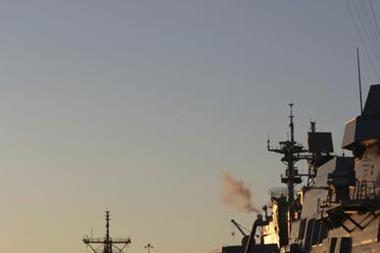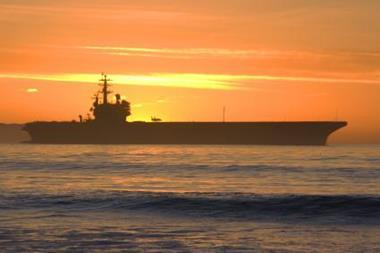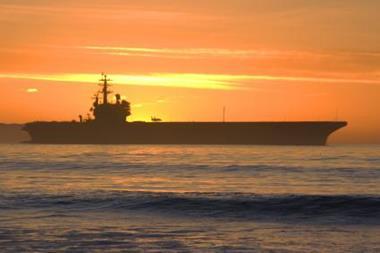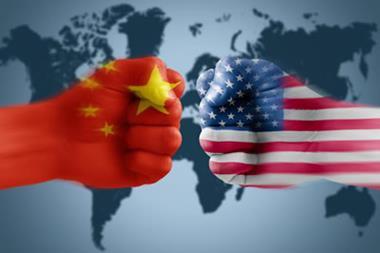Commercial shipping companies paying ransoms have made piracy a booming industry
Pirate attacks have become an increasingly common threat for traders navigating dangerous stretches of water off the East coast of Africa. In the most recent attack, Richard Phillips, a US merchant ship captain, was captured by a small band of armed gunmen. The Maersk-Alabama, which was reported to be carrying aid to the African continent, was pursued and boarded by heavily armed pirates. Despite brave attempts by the crew to repel the boarders they succeeded in capturing Phillips, who surrendered in order to save his crew and cargo. The pirates demanded a $2m ransom in exchange for his safe release. Unfortunately for the pirates, the US navy dispatched a warship and snipers aboard were able to kill Phillips’ captors and free the hostage.
This was not the first time that a western power has deployed its superior military arsenal to rescue kidnapped seafarers. In September last year, French president Nicolas Sarkozy sent special forces to rescue two French nationals from the clutches of armed pirates. These heroic high sea rescues make incredibly compelling stories for the media. Piracy has long been romanticised by storytellers, some contemporaries even describing the Somali pirates as modern day ‘Robin Hood’ types, which is a sharp contrast to the picture painted of ‘Islamist militants’ operating in the same country. But the problem is more than a juicy media narrative. The risks are real. Pirate attacks have rocketed in the Gulf of Aden: gunmen raided 130 ships last year, with 50 successful hijackings, and as many as 200 mariners are currently in the custody of the pirates, according to the Piracy Reporting Centre.
There are a number of reasons for this surge in piracy. For one, Somalia, which borders the Gulf on its northern and eastern shores, is a largely ungoverned state. The pirates who operate from the shores of the country have a free reign to launch attacks and return home with their bounty, safe in the knowledge they will not face prosecution.
Poverty is another major incentive. It may be easier for a young man to pick up an AK47 or join the crew of a pirate launch than go out and find a ‘real’ job. The Horn of Africa is also one of the busiest waterways for shipping in the world. Around 16,000 ships traverse its waters each year and 11% of seaborne petroleum passes through the Gulf on its way to the Suez Canal. This represents a huge and irresistible bounty for some of the poor fishermen who live along the east African shore. International navies patrol a narrow corridor of water, about 500 miles, but that means most of the merchant ships passing through tend to bottleneck in these protected waters. As the ships cram together, they are sometimes forced to slow steam, which puts them at greater risk of attack from the high speed and well armed pirate vessels. Some estimates put the global takings of the kidnap industry at about $500m a year – making piracy
one of Africa’s most successful business models.
“Piracy is one of Africa’s most successful business models
But there is another very big and obvious reason why piracy has become such a booming industry.
It is because commercial shipping companies pay ransoms. Although the recent Maersk-Alabama case ended in the death of the pirates and release of their prisoner, this case is the exception rather than the norm. Would-be pirates living in Somalia think the potential gains far outweigh the risks. Most ransom demands are between $1m and $4m per ship, says Chubb, a kidnap and ransom insurer. That is a huge honey pot. Paying ransoms also seems to make sense to the ship owners. There is a large kidnap and ransom insurance industry. For a premium, companies can buy specialist kidnap, ransom and extortion insurance, which, subject to policy limits, terms and conditions, reimburses the policyholder for the pirates’ ransom demands and pays for hostage negotiation expenses. The policies even cover the costs of a security team to take the ransom to the pirates. Shipping companies purchase insurance, pay ransoms and often incidents go unreported. Who can blame them? As long as all goes well, the ransom resolves the problem and secures the safety of the prisoners – much to the relief of their families. In the long term, however, this just contributes to the problem. It also represents a dangerous feedback loop. If kidnap and ransom insurance is easily available and more people buy and use it, that encourages pirates to pursue ransoms by hijacking ships, in turn increasing the risk to other ships, which forces people to buy more insurance protection.
This is what is happening at the moment. A surge in piracy is encouraging ship owners and managers to seek protection for their vessels, and the increased risk is forcing premiums up. Ship owners navigating the Gulf of Aden are seeing insurance premiums for kidnap and ransom increase tenfold as piracy escalates, according to Aon Risk Services. This means ship owners could be paying a $30,000 premium for $3m of cover for one journey. ‘The cost of insurance is simply rising in correlation with the risk of kidnap in piracy hotspots,’ said Ashley Leszczuk from Aon’s crisis management team.
The hard line approach taken by France and America can be welcomed as it discourages other acts of piracy. But if governments need some advice about the ways to stop piracy they could look to Lord Palmerston, British Foreign Secretary in 1841: ‘Taking a wasps’ nest…is more effective than catching the wasps one by one.’ In order to solve the problem altogether the international community needs to take action on land and help ungovernable states like Somalia recover from their problems.


















No comments yet